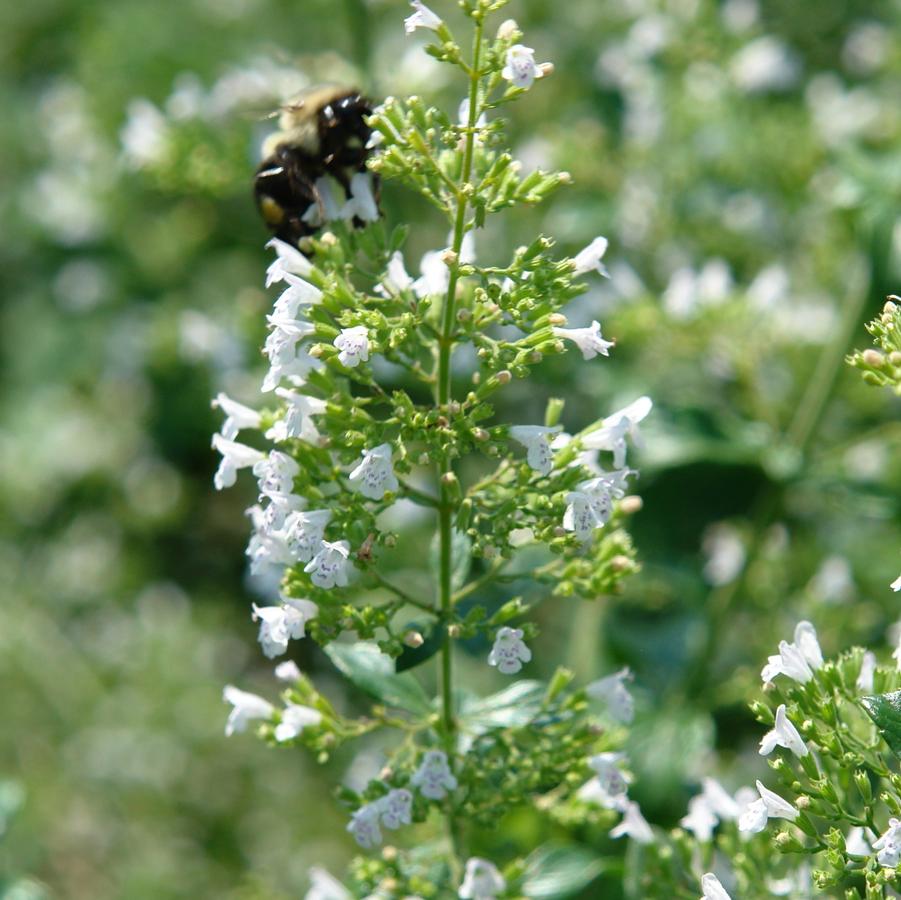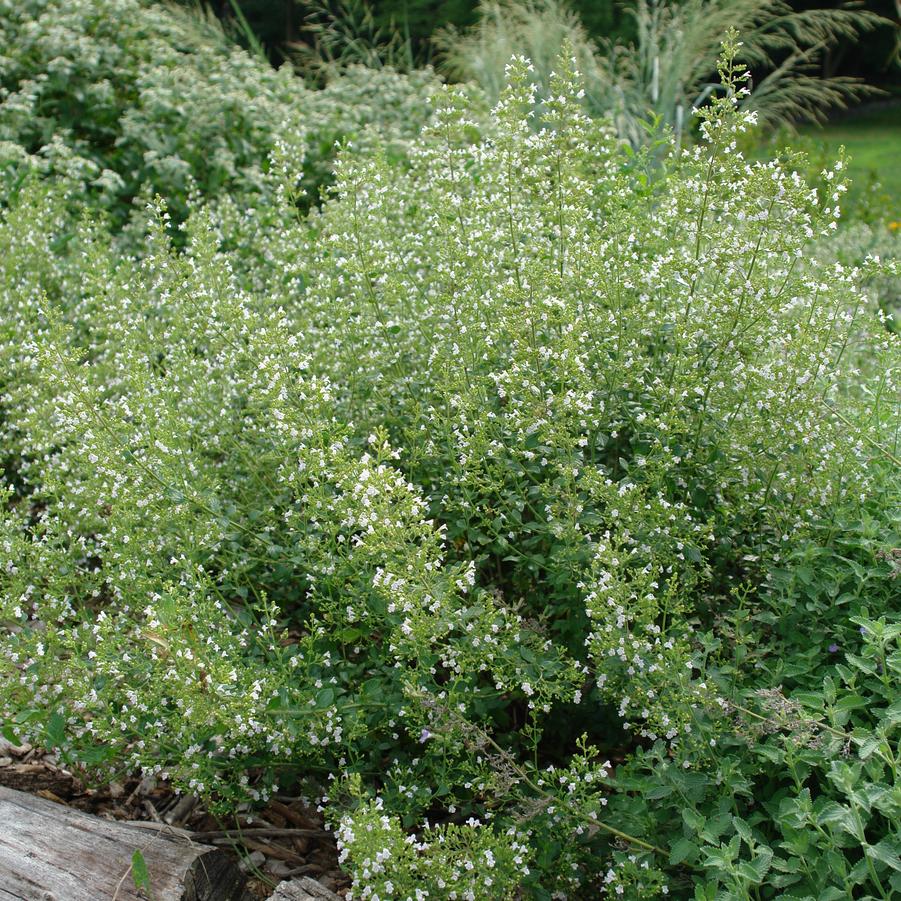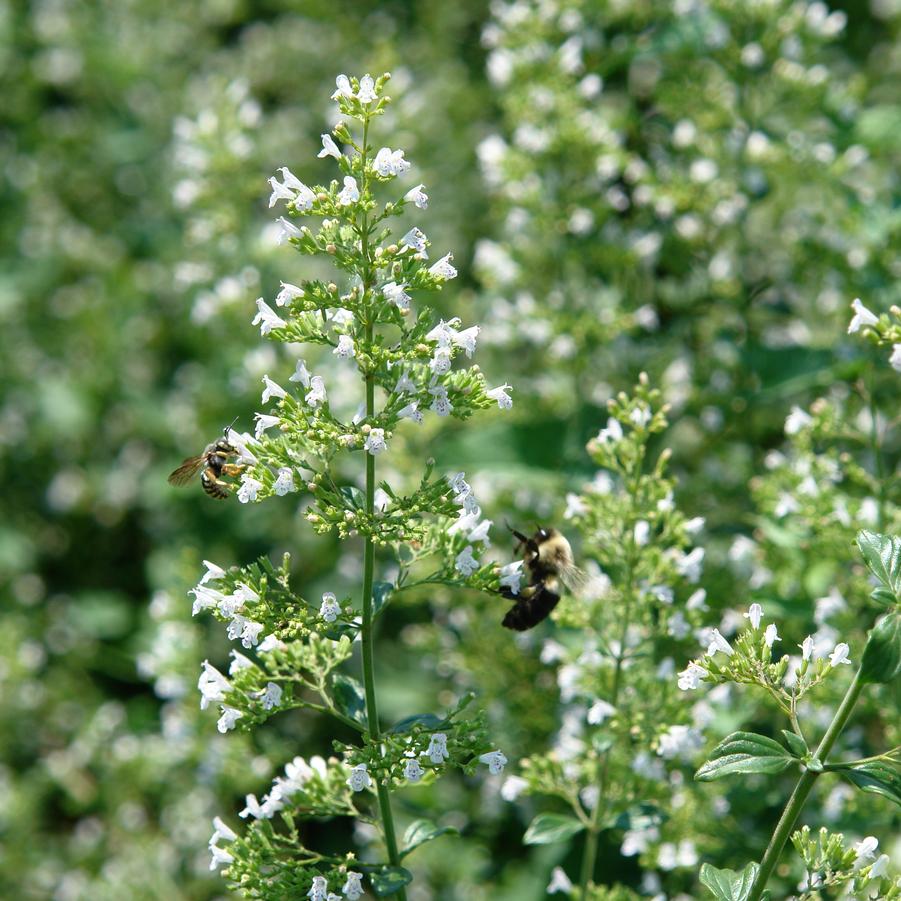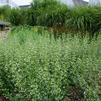





Plant Calculator
Enter the approximate length and width of the area you will be planting and click 'Calculate' to determine how many Calamintha nepeta ssp. glandulosa 'White Cloud' you will need.
Correct and successful spacing is complex and depends on project conditions. We encourage you to call us at 877-ECO-PLUG for project specific recommendations and further assistance.
Calamintha nepeta ssp. glandulosa 'White Cloud'
lesser calamint
- Category: Perennial
- Hardiness Zone: 5-7
- Height: 1-2 Feet
- Spread: 1-2 Feet
- Spacing: 12-18 Inches
- Bloom Color: White
- Foliage Color: Silver
Bright white flowers are larger and showier than the species. It is a longer-lived and better smelling substitute for baby's breath! June-October bloom in an average to dry location.
Additional Information about Calamintha nepeta ssp. glandulosa 'White Cloud'
"Any perennial with the staying power of calamint and its airy beauty deserves accolades from more than the bees. From sunrise to sunset, from June through frost, the airy racemes of tiny, white-lipped flowers attract a motley crew of nectar seekers. Standing knee-high, the small, bushy beauty is delicate but wiry, standing up to any kind of weather, soldiering through rain, overbearing sun, muggy air and clear fall days without a hint of disease or pest problems. It softens a border as well - better than its temperamental look-alike, baby's breath, and calamint is aromatic to boot. Planted with the setting sun behind it, calamint turns into a luminous star of the evening garden. Vice versa in the morning."-Diane Heilenman, Louisville Courier-Journal
Growing & Maintenance Tips for Calamintha nepeta ssp. glandulosa 'White Cloud'
Calamintha is found on dry, rocky sites, but does wonderfully in average garden soil. Full sun, average fertility. Use it to underplant leggy perennials such as Echinacea.

